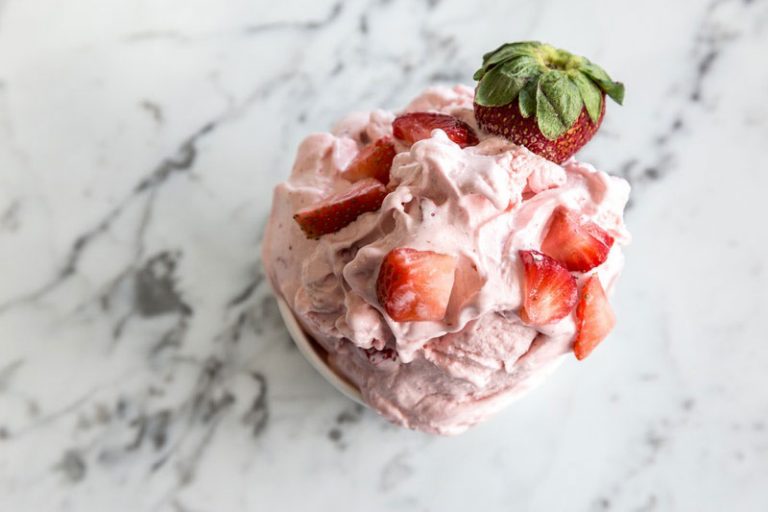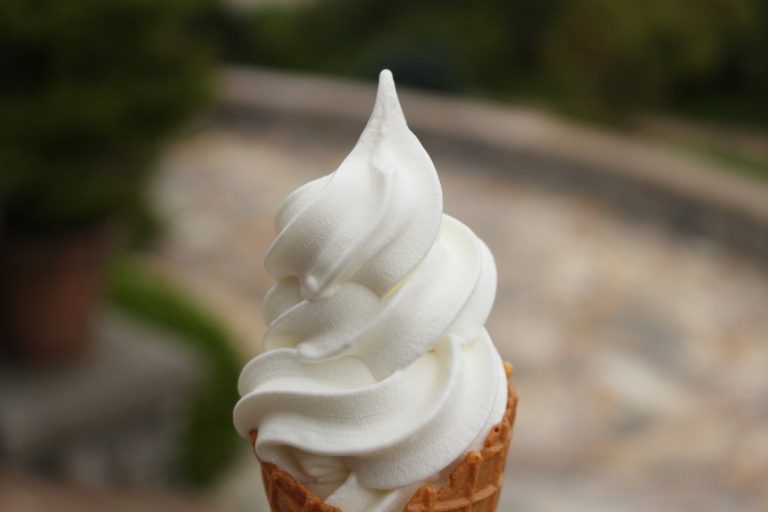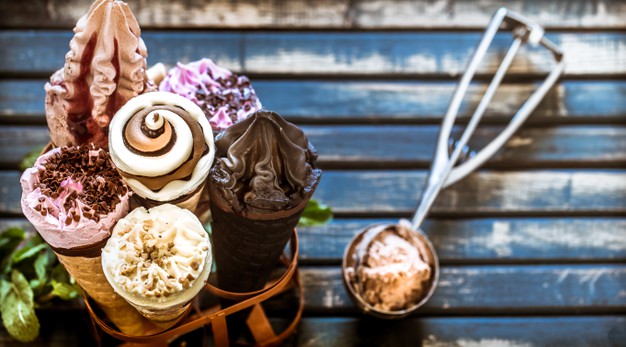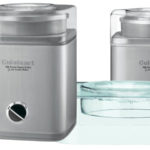Ever felt the need to invest in the best home gelato maker? It might sound…
What are the Different Types of Ice Cream?
When it comes to frozen desserts, your choices are almost endless! Making ice cream at home can be a bit more complicated than you think since there are so many different types.
Each has its own ingredient list, and various production methods deliver different results. While the difference between ice cream types is slight, they have a massive impact on the texture, taste, and flavor. If you want to know how they all differ from each other, keep reading on!
You might also be interested in:
– The best home ice cream makers
– The best ice cream makers with compressors
– How to make fool proof gelato at home
– Why kids LOVE icecream
The Four Different Types of Ice Cream
Although you can make ice cream with many variations, the four main types include ordinary (hard) ice cream, soft serve, gelato, and sherbet. Below, we discuss the basic ingredients, fat content, flavor, serving temperature, and texture of each.
Ordinary Ice Cream

Ordinary, or hard, ice cream is best known around the world. A traditional base recipe is used for its production, and it’s the easiest option when you decide that making ice cream at home is something you want to try. You can customize your batch with different flavors, toppings, and add-ins.
Ingredients: Traditional hard ice cream is made from milk, cream, sweetener, and egg yolks. There are many variations and some recipes call for no eggs, less fat, and other dietary specifics.
Fat Content: Out of all the frozen desserts, ice cream has the highest fat level weighing in at a whopping 14% to 25% in milkfat.
Flavor: Basic ice cream tastes like vanilla. However, you can make this treat from any flavor you desire: caramel, choc-chip, and even hot wasabi! If you’re making ice cream at home, your flavor options are endless.
Serving Temperature: Between all the cold desserts, ice cream is served the coldest. The temperature affects its flavor by numbing your taste buds to a point where intense flavors don’t come through. Ice cream is generally served between approximately 7-12 degrees Fahrenheit (-14°C to -11°C).
Texture: Ice cream has a fluffy yet creamy texture making it unique amongst frozen desserts. It’s churned during the production process, and air bubbles are added to the mixture to create fluff.
Are you looking for a reliable ice cream maker for home? Check out all our reviews and guides!
Soft Serve Ice Cream

Soft serve is a popular variation of ordinary ice cream. As with hard ice cream, you can make soft serve in different flavors, and toppings or a hard dip is usually added to sweeten it up.
Ingredients: Soft serve is made from a milk mixture, milk solids, sweeteners, emulsifiers, flavorings, and stabilizers. Usually, the above is available as a premixed liquid or powder.
Fat Content: The fat content of soft serve is similar to that of ordinary ice cream.
Flavor: Like hard ice cream, you can make soft serve in various flavors to fit every taste bud!
Serving Temperature: Soft serve is frozen at higher temperatures than ordinary ice cream, making the mixture smooth. It’s also served cold enough to numb your taste buds.
Texture: More air bubbles are incorporated into the mix during the production process than with regular ice cream. This creates an ultra-soft, smooth, and creamy texture that swirls.
Looking for a soft serve ice maker for home? Check out our latest guide today.
Gelato

Gelato is a popular Italian frozen dessert, and while laypeople think it’s the same as ice cream, there’s a definite difference.
Ingredients: Gelato is made from a milk mixture, cream, and sweetener.
Fat Content: The average butterfat percentage in gelato is approximately 4 to 9. This is considerably lower than the fat content in ice cream, making gelato a healthier option.
Flavor: Like ice cream, gelato is versatile in flavorings. If you like experimenting when making ice cream at home, making gelato will also be right up your alley!
Serving Temperature: Gelato is served at about 10 – 22 degrees Fahrenheit (-12˚C to -5 ˚C) to ensure that it doesn’t solidify too much when being eaten. Because it’s served at a warmer temperature, gelato has a richer flavor than ice cream.
Texture: During production, gelato is churned slowly, which allows less air to enter the mixture. This results in a dense, thick consistency.
Are you keen to make some delicious gelato at home? Check out our guide to find the best gelato maker for home.
Sherbet
Sherbet (or sherbert) is another ice cream variation. It is considered the fruitier version and usually has beautiful pastel colors.
Ingredients: Sherbet is made from a fruit puree mixture, sweetener, and a tiny bit of milk or buttermilk.
Fat Content: Because it uses a small amount of dairy, sherbet has a fat content of only 1-2%. This clocks it in lower than both ice cream and gelato.
Flavor: Sherbet’s flavoring comes from the fruit puree used to make it. This gives you unlimited use of fruits while that’s where it ends. Still, you can mix different fruits to create fruity explosions!
Serving Temperature: The serving temperatures of sherbet are similar to that of gelato, resulting in the same flavor punch!
Texture: Sherbet isn’t as rich as ice cream and gelato due to its low cream content. However, it is still creamy enough to qualify as ice cream and not sorbet.
Making ice cream at home is a fun way to indulge in your favorite cold dessert. Not only does it allow you to test the different types of ice cream, but you also get to experiment with flavors not usually found in stores!
Join Me In The Fun of Making Ice Cream at Home!
Hi, my name is Simone and I LOVE making and eating ice cream. I have searched long and hard to find the best ice cream maker reviews and tips on the best ice cream makers.
Find out a little more about myself and the IceCream Maker Guru gang here.
Thanks for visiting and may your ice cream always be delicious!
Simone xx
Categories
Recent Posts
Most Popular Posts
Share with Friends
Related Posts
-
Make Fool Proof Gelato at Home with these Top Home Gelato Makers
-
Our 9 Favorite Types of Ice Cream
Get your ice cream cones ready because here is a list of our favorite types…
-
Cuisinart ICE-30BC Ice Cream Maker Review
Cuisinart ICE-30BC Ice Cream Maker Review - Based on all reviews and technical specifications Cuisinart…









